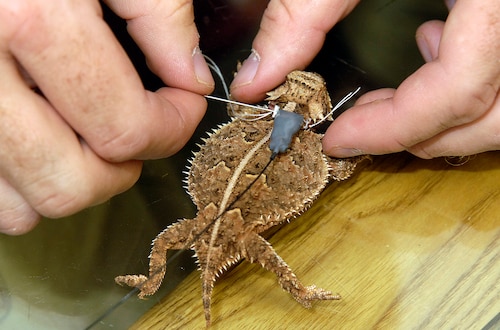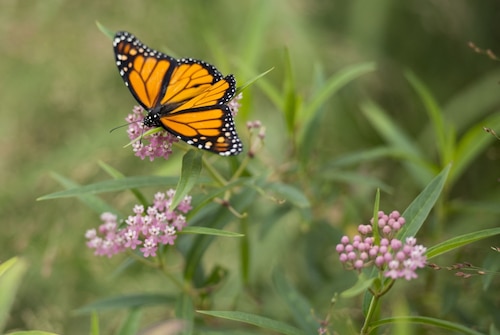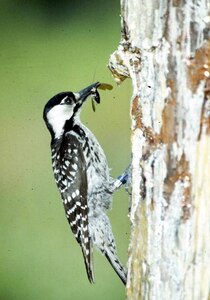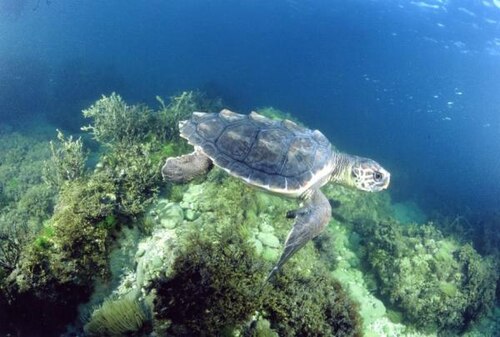Air Force helps protect more than 100 threatened, endangered ‘neighbors’
JOINT BASE SAN ANTONIO-LACKLAND, Texas – Air and Space Forces families have many unique and interesting neighbors from the big ones with fur and scales to the tiny ones with claws and strange teeth.
Humans share the Earth with nearly 8 million animal species. Luckily for military families, many of the most interesting of these are part of our base communities around the globe.
Because animal communities need homes too, the Air Force works hard to be a good neighbor. That means paying special attention to the 123 threatened and endangered species who live at 54 of our installations. The Department of the Air Force Environmental Program works to protect these animals while also ensuring the success of the Air Force mission.
Managed by the Air Force Civil Engineer Center, part of the Air Force Installation and Mission Support Center, our environmental teams often join forces with other organizations to keep some of our smallest neighbors safe. Our planet is the only home we have and by working together, we can make a difference and create a future where we all thrive.
Read on to learn about some of the amazing species the Department of the Air Force helps protect on Earth Day and every day of the year.
Texas Horned Lizards
Have you ever seen a lizard wearing a backpack? Air Force representatives at Tinker Air Force Base in Oklahoma joined officials from the Oklahoma Zoo and the University of Oklahoma for a special project that outfitted 34 lizards with miniature solar-powered cellular tracking devices. With the devices, the Air Force can monitor their location to ensure their safety during training missions. The backpacks weigh less than a penny and help Air Force biologists learn more about the Texas Horned Lizard’s habitat to better protect them.
Sonoran Pronghorn
Did you know the fastest land mammal in North America lives in the Arizona desert near a Luke Air Force Base training range? Threats to their survival -- like draught and habitat destruction -- led the Air Force Civil Engineer Center to develop a special conservation plan and invest in a study that monitors the presence of these mammals near the Barry M. Goldwater Training Range. Biologists use binoculars, spotting scopes and telemetry monitoring to locate the radio-collared pronghorns. They also provide water and create safety areas to protect these animals from other desert predators.
Monarch Butterfly
Did you know that monarch butterflies are important to our ecosystem? During their 3,000-mile annual migration, they fly through several Air Force bases and carry pollen between flowers and plants to fertilize them. Without pollinators like monarchs, we would not have strawberries or raspberries to enjoy. The Air Force is taking proactive measures to keep this species off the threatened and endangered species list at Air Force bases like Beale in California and Tinker in Oklahoma by turning landfills into pollinator gardens with milkweed flowers, the plant that monarch butterflies feed and lay eggs on.
Red-Cockaded Woodpecker
Did you know the Air Force protects the homes of the Red-Cockaded Woodpecker on its bases by removing dead leaves and underbrush around trees? Firefighters do this by starting small fires, called controlled burns, to burn it away. Burning away dead vegetation encourages creating welcoming new nests for these birds. Because of this conservation effort, Air Force installations now have over 500 active breeding groups and the population of this currently threatened species increased by 178%! Plus, the Air Force can safely control the flames ensuring fires never get big enough to destroy trees or other animal habitats.
Sea Turtle
Have you ever seen a sea turtle in its natural habitat or at the beach? They hatch on the shorelines of many Air Force base in southern Florida. The eastern coastline can be affected by various natural disasters including hurricanes and flooding. These events often destroy the sandy dunes that the turtles move to when they dig nests to lay their eggs in summer. Preventing shoreline erosion is part of the Department of Air Force’s coastal resiliency project at bases like Tyndall Air Force Base, Florida. Thanks to this effort, not only can people enjoy activities on the beach, but they might even spot a sea turtle!
Okaloosa Darter
Did you know this little fish helps us determine the health and well-being of our bases? That’s why when the Okaloosa darter was put on the Endangered Species List, the Air Force natural resource teams knew they needed to act! They started a partnership with other organizations to restore wetlands, remove fish barriers and obsolete bridges, and cleaning streams of excess sediment to improve water quality. Thanks to everyone’s hard work, the fish population has now grown by almost 400% and the Darter will be coming of the threatened and endangered species list soon!
Gopher Tortoise
Have you ever had to move to a new home? 4,300 gopher tortoises that lived all over Florida were packed up and moved to Eglin Air Force Base because their homes were being destroyed because of construction projects. Transitions can be difficult, but luckily Eglin’s natural resource team worked hard to create a large, safe space for these animals. To help the tortoise continue to enjoy their new home, the Air Force uses controlled burns to clear tall trees to allow grazing plants such as wiregrass, broadleaf grasses, wild peas, blueberries and prickly pear cacti to grow. These plants are some of the tortoise’s favorite foods. The Air Force also puts tracking devices on the reptiles to monitor their location to ensure their safety during training missions.
Burrowing Owl
Do you enjoy making friends when you move to a new home? Burrowing owls and prairie dogs are special friends that like to live in the same kind of home. In fact, prairie dogs with their little paws are such great home builders that these owls many times move right into prairie dog burrows when prairie dogs decide to move out. Air Force Natural Resource officials at places like Buckley Space Force Base, Colorado, know a thriving prairie dog colony directly impacts a healthy burrowing owl population. These experts do their best to monitor and support both. Protecting and managing ecological systems that include furry and feathered friends allows the Air Force to maintain its lands in peak condition for natural habitats and mission readiness.
As we celebrate these great efforts on Earth Day and every day, dig out your favorite crayons and markers and show us what color YOUR Earth Day adventure is this year. Please email completed coloring page pictures to AFIMSC.PA.Workflow@us.af.mil and then check back with us throughout April as we showcase the work of our awesome military kids on our AFIMSC Facebook page. Get your coloring pages HERE.








